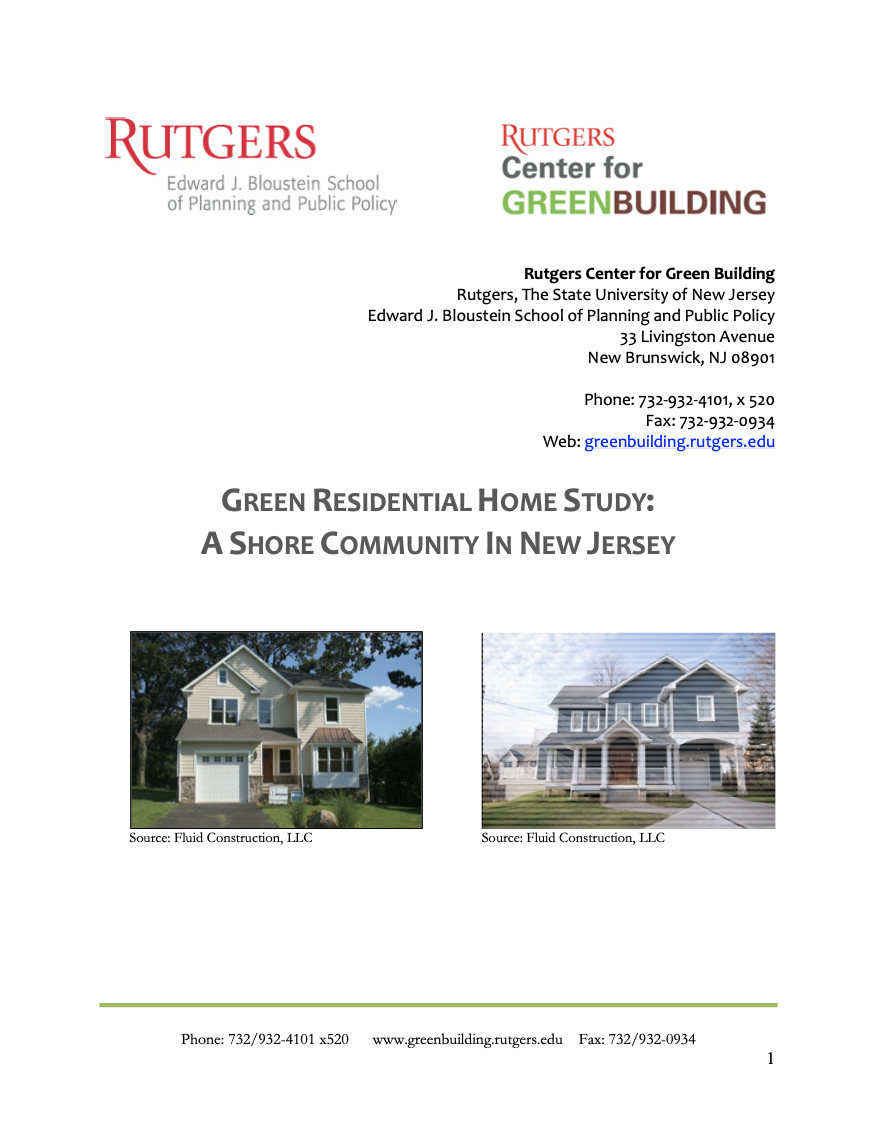This case study was prepared by the Rutgers Center for Green Building (RCGB) and commissioned by the New Jersey Chapter of the U.S. Green Building Council (USGBC-NJ). It is a product of the Green Building Benefits Consortium (GBBC): a partnership between the Rutgers Center for Green Building and the New Jersey Chapter of the U.S. Green Building Council. The consortium is made up of a broad range of stakeholders in the building industry, including building owners, developers, facility managers, contractors, manufacturers, architects, engineers, green building experts, consultants, investment funds, government agencies and professional associations.1 The partnership creates the opportunity for industry stakeholders to guide research on topics of green post occupancy evaluation (POE), such as increased energy savings and enhanced occupant satisfaction and performance, which have the potential to maximize benefits to companies and industries.
This case study focuses on a high-performance single family home built to the Silver standard set by the U.S. Green Building Council’s Leadership in Energy and Environmental Design for Homes (LEED- H)by Fluid Construction in a shore community in New Jersey. Two other high-performance homes, a “Code Plus”2 home, and an ENERGY STAR-rated home—both also built by Fluid Construction in the same community—are analyzed for comparative purposes throughout the study. This two-year study brings together analyses on physical performance measures in such areas as energy and water consumption, indoor air quality, and construction and operation costs, and survey work in the areas of occupant comfort and satisfaction. This work includes the following:
- Analysis of utility data (electricity, natural gas, and water bills) collected from homeowners.
- Analysis of indoor air quality samples (volatile organic compounds) collected pre- and post-occupancy.
- Interviews with homeowners to gather information on household water use, energy use, and indoor environment quality, and the factors affecting these.
- Assessment of economic impacts through a Life Cycle Costing (LCC) analysis.
The combination of the above research provides the basis for this report that highlights the home built to the LEED-H Silver standard’s performance, homeowner satisfaction and cost, while comparing the findings of that research to two other homes built to varying levels of energy-efficiency and green building standards.
